8 Harmful Things Tech Is Doing to Your Body
Modern technology has many benefits, but depending on how you use it, it can damage your body and brain. Here are 8 ways tech might be harming you.

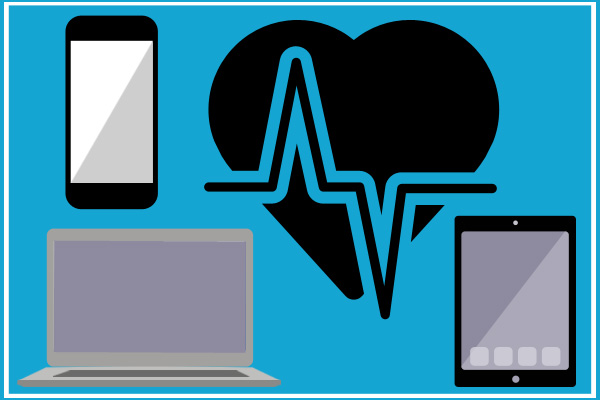
Millions of American jobs that once took place on farms or in factories are now done at desks, where people type on a keyboard day in and day out. Then, there are mobile devices. Americans spend an average of 58 minutes per day on their smartphones, according to a study by Experian Simmons Connect. Sooner or later, all that time and tech will take its toll on your body in one way or another. Some of these ailments are obvious, but some are not. So let's run down some of the common and not-so-common tech-related injuries that may affect you soon, if they haven't already.
1. Sitting-related ailments

"But I go to the gym after work," you insist. That's good, but if you sit for 2, 3 or 4 hours at a time, your workouts are pointless. It's not sitting itself that's bad; it's prolonged sitting, as several studies show, including one from the Energy Metabolism Laboratory at the University of Massachusetts in Amherst. Some of the unhealthiest people I ever met were MMO gamers, and I've had several friends quit playing EverQuest after their health deteriorated from too much gaming.
MORE: Best Fitness Trackers 2014
From a medical standpoint, you run the risk of two kinds of problems: musculoskeletal and metabolic. On the musculoskeletal side, you are at risk of a compromised posture, because sitting puts pressure on the lumbar discs in your lower back, pushing your head forward and causing your shoulders to rotate inward. This puts pressure on your lower back, neck and shoulders. Over time, this leads to rheumatic disorders, like arthritis, according to the National Institute of Arthritis and Musculoskeletal and Skin Diseases.
On the metabolic side, your energy expenditure drops to nothing, according to the National Institutes of Health. You literally burn one calorie an hour. You also keep your muscles relaxed, which slows down your metabolism, thus raising your risk of obesity, metabolic syndrome and type 2 diabetes. Plus, it's bad for your cardiovascular system and blood pressure.
One study, published in the Journal of the National Cancer Institute, even asserts that prolonged sitting increases your risk of certain cancers. In that study, researchers found that women who spent 10 hours a day sitting had an 8 percent higher chance of colon cancer and a 10 percent higher risk for endometrial cancer, than women who sat for 8 hours daily.
The solution: Stand or walk every hour for 5 to 10 minutes at a time. The Centers for Disease Control and Prevention also recommends regularly taking a brisk lunchtime walk of 30 minutes or so.
Get instant access to breaking news, the hottest reviews, great deals and helpful tips.
2. Breathing problems

Yup, prolonged sitting can mess with your breathing as well. When you sit in a chair, there is a tendency to sit with your head forward, leaning in with your chin and your butt sticking out in the other direction.
This messes up your body's ability to breathe properly. As adults, we tend toward clavicular (shallow) breathing, where you heave hard in and out, and expand your shoulders. This fills only about one-third of your lungs. You're supposed to breathe from your abdomen, with your belly going in and out. This fills your lungs. Babies know this. Watch a baby breathing while it sleeps: Its belly goes up and down as it breathes from its abdomen. As adults, we forget how to breathe properly.
MORE: 15 Best Fitness Apps
"Thirty percent of my patients don't breathe right," said Dr. Chris Barney, a chiropractor in Irvine, California. "If you don't get appropriate oxygen profusion, everything else takes longer to heal. This has been building over the last 10 years. With the advent of more and more tech, I'm seeing it a lot more."
The challenge, Barney said, is that people don't go to the doctor realizing they have a breathing problem. Instead, they come in with a bunch of other issues, like headaches, neck pain and stiffness, pain down the arm, shoulder pain and more. That's when Barney realizes the patients have an issue with their posture, usually resulting from a breathing problem.
So, how are you sitting at this moment?
The solution: You may not need an inhaler, but you do need better posture. Place both feet flat on the floor. Roll your shoulders up, back and down. Fill your belly and exhale. At least five to 12 breaths per minute is considered normal for adults.
3. Twisted-neck issues
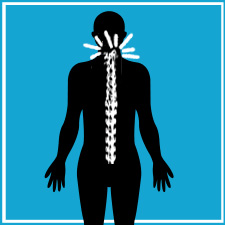
In cramped environments, many people don't place their computer monitor directly in front of them; it's often off to the right or left. That stresses the neck and all the way down the spine, and it stresses the neck muscles as well. The way you hold your tablet, in your lap, can also contribute to an increasingly common condition known as tablet neck.
"People complain more of back pain than neck pain, but it starts with the neck and causes the back pain. The cervical spine is twisted, and the residual effect goes down the back and causes stress on the back itself," said Brent Concolino, president of The ROCK Institute, a sports medicine group in Newport Beach, California.
MORE: How the Internet of Things Could Kill You
One way to find out if your neck is being stressed is to track your headaches, according to Concolino. If the pain runs across the eyebrow to the outside of the eye and then down and around the rim of your eye socket, that's a sign of a strained neck. In particular, it's a muscle called sternocleidomastoid, or SCM. If you've seen someone grimacing while lifting something heavy, those muscles stick out and give a distinctive V shape.
The solution: Make sure your monitor is directly in front of you at a 90-degree angle when you're sitting with proper posture. Also, get a stand for your tablet, and place it on a table rather than holding it in your lap.
4. Weakness
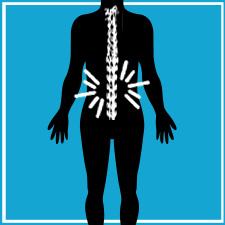
Sitting changes the tilt of your pelvis. Your lumbar area, the bottom five discs of your spine, carries the bulk of your weight. Sitting tilts the pelvis forward and puts more pressure on these discs. This, in turn, puts more pressure on the discs. Chronic hip flexion — the position you are in when sitting — causes problems with a variety of muscles, Barney said.
MORE: The Best Apps to Improve Your Workout
This cycle keeps your muscles tight. As muscles tighten, you reduce the range of motion, Barney said. At this point, the muscles can't work efficiently anymore, he said. "A chronically tight muscle gets weak and works inefficiently. This causes a sequence of events," he said. The muscle gets weaker, it doesn't work as well, other muscles have to compensate for it and pretty soon, you are completely out of balance.
The solution: Barney recommends using an exercise ball as a chair. It has a little give, which puts less pressure on the glutes and no pressure on the hamstrings. It also forces the person to sit upright without any support to the back. However, it should not be used for a long time because it will tire out your muscles, Barney cautioned.
5. Sore thumbs

Concolino said some of his patients send up to 1,000 texts a day, but the average American sends about 70 per day, according to Experian. Regardless, the result of all that finger typing is what he calls "texting syndrome," where a person develops arthritis or tendonitis in his or her thumbs. (It used to be called BlackBerry thumb, but times have changed.)
"It's an overuse injury. [People] are overusing [their thumbs] for a long period and turning it into a chronic injury because they are having that tendon stressed," he said.
The syndrome is likely characterized by numbness or tingling in the thumb, 2nd and 3rd fingers and sometimes half the ring finger.
The solution: If it hurts, stop doing it. Pick up the phone and call. Barring that, vary the hand you use or the digits you employ. There are braces that can help as well, or you can try some basic exercises or massages. For instance, Kaiser Permanente recommends making a fist. Start by holding your left hand up straight. Then, slowly bend the fingers into a fist with your thumb on the outside. Open up again, and repeat. Do this 10 times. Then, start on the right hand.
6. Eye strain

Eye problems from computer, smartphone and tablet use are nothing new. But computer use makes eyes not only sore, but also dry. People don't blink as much when they're staring at a computer screen. This causes the tear film on the eyes to dry up, and dry eyes are unpleasant. You get blurry vision, your eyes narrow and you can lose you peripheral vision. According to the American Optometric Association, this is called computer vision syndrome.
Mike Lenhardt, an optometrist in Fullerton, California, said eye strain can be caused by a variety of factors, including the position of your monitor, how you sit, whether you are looking up or down at the monitor, the angle of your head and neck, and the light sources in your room.
Lenhardt said that to avoid this problem, you should use diffusers to eliminate reflections off your computer screen that cause glare, and look straight at or down at the monitor. "The higher up you have to look, the more open your eyes have to be, so they are more prone to dryness. You want to look down at the screen, especially in an environment where air conditioning is used, because that dries your eyes as well," he said.
The solution: Concolino tells clients to follow the 10/10/10 rule: Every 10 minutes, blink your eyes 10 times and look at something far away for 10 seconds. Avoid light behind you, because that causes monitor glare. Put a lamp to one side of the monitor and behind it to avoid glare.
7. Ear strain
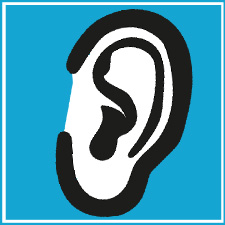
Tech can be hell on the ears. About one in five teenagers now have some form of hearing loss — a 33 percent jump since the 1980s and 1990s — and the use of earbuds, rather than over-the-ear headphones, is being blamed, according to Consumer Reports. Other symptoms that might indicate your headphones or earbuds are doing damage include pressure in the ear, or ringing or buzzing in the ear.
The solution: Turn down the volume. Sound levels higher than 85 decibels for extended periods can cause ear damage; that's on a par with the average sound level in a school cafeteria. Most music players at high volume put out 105 dB. At that level, 5 minutes of listening is likely to hurt your ears, according to the National Institute for Occupational Safety and Health.
8. Mental-health issues
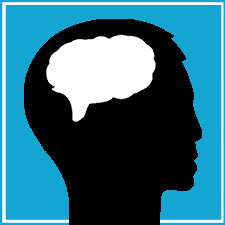
Too much tech is bad for your mental health, and I don't mean from using Windows 8. Using tech can make you feel bad about yourself.
For example, spending too much time on Facebook can lead to Facebook depression because people often perceive other people as having a better life than them, or having it worse than them and feel empathy.
Facebook depression stems from a larger condition known as social media depression, which doesn't yet appear in the official Diagnostic and Statistical Manual of Mental Disorders.
Nonetheless, scientists have recognized an association between depression and Internet use. One study from 2012, published in the journal Medical News Today, suggested that Facebook use feeds anxiety and increases people's feelings of inadequacy. Also, Ethan Cross, a social psychiatrist at the University of Michigan, found that Facebook can actually make people miserable.
Facebook addiction is also a new reality. Researchers in Norway have even created the Bergen Facebook Addiction Scale to measure and quantify the seriousness of a user's obsession. The hope is to take into account a person's use, thoughts of use and psychological effects, to get to the bottom of the person's addiction and thus find a treatment.
The solution: Take time to avoid all social media each day. And when you do log on, be careful to evaluate whom you follow or add as a friend. Are they overly critical or negative? Consider unfriending the bad energy in your life.
- Why Wearable Tech Is Still Behind the Times
- Best Headphones 2014
- iPad Neck Strain: 5 Tips to Avoid Injury
Follow us @tomsguide, on Facebook and on Google+.
-
LePhuronn I suffer from pretty severe depression and when it flares up it can cripple me, so I know a thing or two about mental health. That being said, if Facebook can make you feel inadequate then frankly you need taking out the back and shooting, or maybe just grow up.Reply
Social Media Depression is not a thing. It sounds more like one aspect of a much larger issue called "being vapid and giving too much of a <mod edit> about what other people are doing" perpetuated by tabloid bullshit and celebrity sensationalism. Get your own life first and suddenly what other people do won't affect you. -
RaDiKaL_ "Too much tech is bad for your mental health, and I don't mean from using Windows 8."Reply
I loved that phrase.
